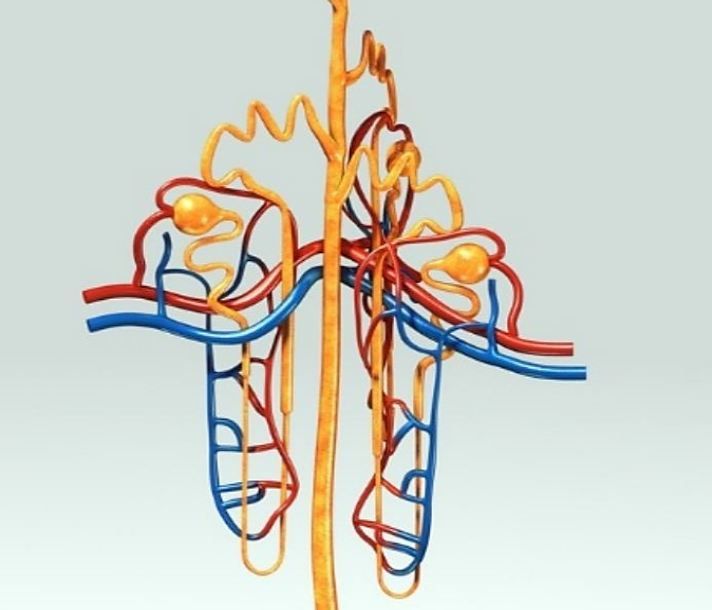KDIGO Releases 2024 Clinical Practice Guideline for Evaluation and Management of CKD
The KDIGO 2024 CKD Practice Guideline is the first update since the 2012 iteration and so is based on the newest research on treatment and technology available.
Kidney Disease: Improving Global Outcomes (KDIGO) announced today the release of the 2024 Clinical Practice Guideline for the Evaluation and Management of Chronic Kidney Disease (CKD), the first update to the practice recommendations since publication of the KDIGO 2012 CKD Guideline.1

The new guideline includes 6 chapters of recommendation statements and practice points whose scope covers the evaluation of CKD, risk assessment in people with CKD, management to delay CKD progression and manage complications, medical management and drug stewardship in CKD, and optimal models of CKD care.2 The majority of statements from the 2012 guideline have been updated based on current knowledge and practice, guideline authors wrote. Only 6 statements were retained in their original form from 2012.2
Developments introduced into clinical practice since the 2012 guideline was published are central to the 2024 update including new guidance on measurements of estimated glomerular filtration rate and albuminuria, utilization of CKD risk prediction equations, personalized treatment recommendations for kidney and cardiovascular risk reduction, and novel treatments, all of which have “positively influenced the prognosis for people with CKD.”2
“There is a clear and increasing recognition of CKD as a global public health problem,” Paul Stevens, MB, of East Kent Hospitals University NHS Foundation Trust, said in the KDIGO press statement.1 “The inclusion of people with CKD in clinical trials has greatly improved, giving us an evidence base upon which to recommend care and treatments that had not previously existed.” He points to the continued increase in sophistication of diagnostic tools and advances in technology as clear evidence of a “new era in nephrology.
“It is time to address the care gap in those with CKD who remain undiagnosed, untreated, and undermanaged and we hope that insights and guidance from this guideline will help optimize CKD care delivery and improve outcomes for people with CKD around the world,” said Stevens.1
The guideline is focused on a patient population with an established diagnosis of CKD, according to the authors, although some of the specific practice points that accompany recommendations serve to clarify the evaluation of CKD and support evaluation of disease chronicity.2
The guideline’s treatment approaches and actionable recommendations are based on the broad systematic review of evidence published since the 2012 update and assessment of the quality of evidence and follow the traditional GRADE approach.1 Accompanying the recommendations are Practice points, consensus-based statements that are ungraded and reflect the expert judgement of the Work Group. According to the guideline authors, practice points were developed when a clinical question did not have a systematic review performed, to help readers implement guidance from graded recommendation, such as frequency of monitoring, provision of standard care (eg, regular clinic visits), and referral to specialist care, etc. Although they were developed using a different methodology, the authors stress they are meant to be used in concert with the graded recommendations to inform effective care for persons with CKD.1
Then guideline also includes, for the first time, an extensive chapter dedicated to research recommendations to help fill evidence gaps identified during the development of the 2024 iteration of the recommendations and to address unanswered questions, all toward advancing the knowledge and evidence base in CKD.2
“We are thrilled to publish this eagerly-anticipated update, which comes during a transformative period in nephrology, offering new hope for people living with kidney disease,” Adeera Levin, MD, professor of medicine and head of the division of nephrology at the University of British Columbia, said in a press release.1 “By integrating the latest evidence and expert consensus, we aim to empower healthcare professionals, and patients with actionable recommendations to optimize patient outcomes and enhance quality of life.”1
Highlights of the 2024 revised KDIGO CKD guidelines2
The first chapter pertains to the evaluation of CKD, recommending the use of both urine albumin measurement and assessment of GFR for testing individuals at risk for and with CKD. In adults at risk for CKD, investigators recommend using creatinine-based estimated glomerular filtration rate (eGFRcr), although if cystatin C is available, they note the GFR category should be estimated from the combination of creatinine and cystatin C (eGFRcr-cys).2
Kidney biopsy is also recommended as an acceptable, safe diagnostic test to evaluate cause and guide treatment decisions. The authors also suggests point-of-care creatinine and urine albumin testing where laboratory access is limited or where the on-site test would facilitate care.2
Risk assessment is the focus of chapter 2 and guidance includes assessment of albuminuria in adults, or albuminuria/proteinuria in children, and GFR at least annually in people with CKD. For any person who is at greater risk of disease progression, the guideline recommends more frequent use of these tests.2
Guidance on management of medication, the focus of chapter 4, includes understanding the increased susceptibility to nephrotoxic effects of medication among people with CKD, and a careful balancing of benefits versus potential harms when prescribing. Practice points related to drug stewardship recommend thorough medication reviews periodically and at transitions of care to assess adherence, continued need, and the risks of polypharmacy.2
The guideline outlines circumstances for referring adults with CKD to specialist kidney care services and discusses the identification, assessment, and management of symptoms, the use of team-based integrated care, timing the initiation of dialysis, and other recommendations and practice points regarding optimal models of care.2